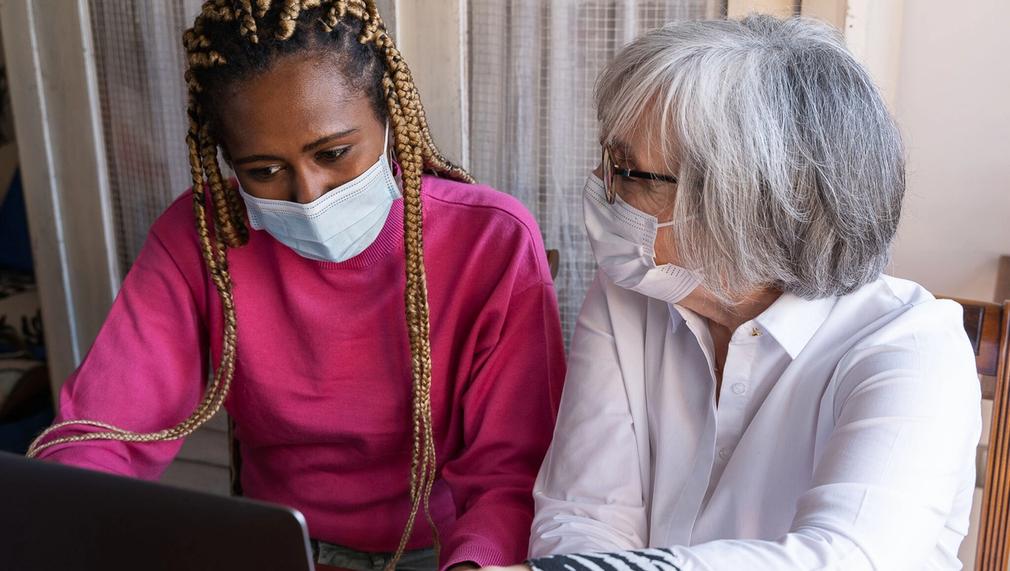Mobile Digital Community Meeting Kit
Our Mobile Digital Community Meeting Kit will help bridge the “digital divide” in low-income, immigrant, and primarily BIPOC neighborhoods that prevents stakeholders from engaging in community planning and improvement projects. We will provide supported, COVID-safe access to digital meetings, surveys, and other community-wide interactions using Meeting Kit laptops, tablets, and WiFi hotspots. We will also offer general digital literacy resources to help people more broadly connect to technology and information.

In which areas of Los Angeles will you be directly working?
Central LA
East LA
South LA
What is the problem that you are seeking to address?
In 2020, consistent internet access became even more essential. But too many people who live, learn, and work in LANI neighborhoods struggle to access technology, which makes engaging them in planning and improvement projects that will impact their daily lives more challenging. Some conditions that cause this “digital divide” include the expense of a laptop, tablet and/or internet service; language barriers; not having email or social media accounts; and concerns about internet security and privacy. These challenges overlap with traditional barriers to equitable stakeholder involvement in underserved communities; limits on gathering in-person have added even more complication. A prior focus on digital access in rural areas has not addressed the same problem in low-income urban communities, which often are also majority BIPOC or immigrant communities. In an era of virtual meetings, telehealth, and online shopping for necessities, the digital divide poses significant equity issues.
Describe the project, program, or initiative that this grant will support to address the problem identified.
Our pilot project is a Mobile Digital Community Meeting Kit. We will bring a “kit” of laptops, tablets, and Wi-Fi hotspots to a safe public location and help people access digital meetings, surveys, and other online interactions related to community improvement projects. The kit will also be utilized at on-site events, like project-specific charrettes, street fairs, or farmers' markets. With full funding, we will engage a new part-time staff member for the grant period to manage support at Digital Meetings and provide materials to help participants with general online literacy, like establishing email or social media accounts, ensuring internet safety and privacy, and accessing web translation tools. During the pandemic, virtual meetings and online data gathering have replaced the in-person outreach and engagement strategies we have long relied on, and post-pandemic, online community engagement will continue to be a component of neighborhood improvement projects; we have seen that virtual engagement can even increase community participation because it does not require transportation, childcare, or extended time away from work or family. To engage diverse stakeholders in the planning process during and post-COVID, the digital divide must be addressed so that senior citizens, non-English speakers, families with young children, people with disabilities, and others can fully engage in decisions about how the built environment in their neighborhoods can make life better.
In what stage of innovation is this project, program, or initiative?
Pilot or new project, program, or initiative
Approximately how many people will be impacted by this project, program, or initiative?
Direct Impact: 200
Indirect Impact: 180,000
Describe how Los Angeles County will be different if your work is successful.
If our pilot project is successful, L.A. County will have a scalable model for bridging the digital divide in neighborhoods that are low-income and/or home to primarily BIPOC and immigrant residents who have historically been left out of the community planning process. It is generally considered best practice for neighborhood-scale improvement projects to be initiated and led by local stakeholders; doing so fosters community pride, helps secure buy-in, and ensures that improvements are responsive to genuine community needs and desires. LANI's long-term goals for this program are to continue to meet people where they are, to support them in envisioning changes to their built environment, and to enhance their capacity to be advocates and decision makers for their own communities by improving their access to and understanding of the digital tools that are becoming increasingly integral to this work.
What evidence do you have that this project, program, or initiative is or will be successful, and how will you define and measure success?
We will measure success by the number of neighborhoods and individuals we are able to engage with our Mobile Digital Community Kit. Metrics we will track include: number of individuals/businesses assisted to participate in an online meeting or survey using the Kit; number of neighborhood planning projects where stakeholders are engaged using the Kit; number of individuals who receive general online access resources (ie set up an email, set up a social media, learn about internet safety/privacy, learn how to use Zoom, learn how to view the internet in their preferred language); number of individuals engaged at community events (ie street fairs, right of way charrettes, etc) using the Kit. As a pilot, we will also be watching for opportunities to share the Kit with partners in municipal agencies and community-based organizations, and considering opportunities to scale application of the Kit in the future.
Which of the CONNECT metrics will you impact?
Internet access
Disability access and inclusion
Immigrant integration